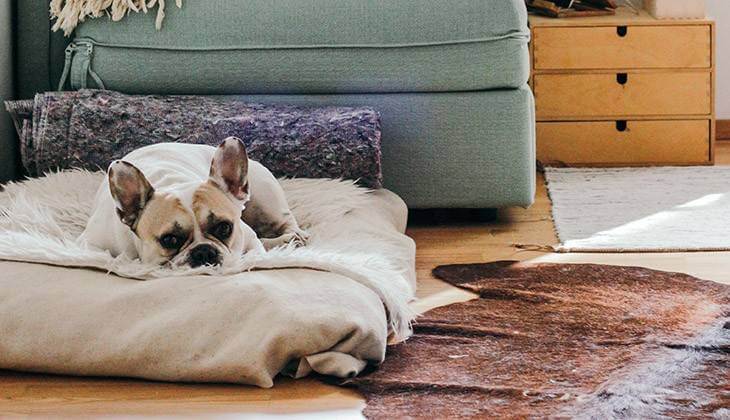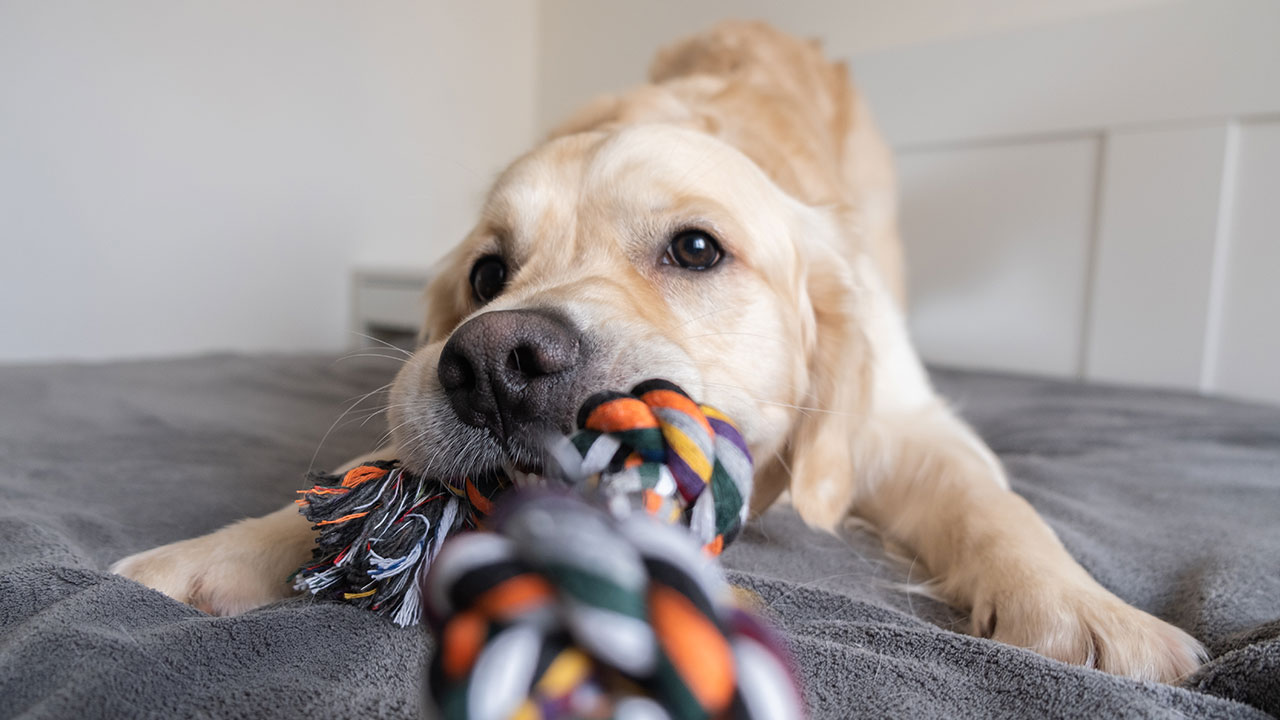Many people think that ticks are annoying little pests that are sometimes found on their dogs during the Spring and Summer. The truth of the matter is that ticks are dangerous, resilient hunters that are a potential risk to your dog 365 days per year, with some looking for food outside, and some hunting inside your home. Ticks are blood-sucking parasites, which means that their entire existence depends upon one thing and one thing only: an unprotected dog. It is easy to believe that an unsuspecting dog can quickly become a tick’s next dinner, but what about you and your family? Ticks can transmit dangerous diseases to everyone under your roof. There’s a good chance that one of these tiny bugs will make its way into your world someday. Here are the top 10 places where ticks lurk in your environment.

1. ON YOUR DOG
First and foremost, ticks lurk on your dog. These little pests may latch on between the toes, on the back of the head, under their collar, behind and in the ears, near or under the tail, on and under their legs…any place that’s warm and hidden where they can go unnoticed for up to five days, all the while feeding on your dog’s blood and possibly transmitting a disease or two along the way. If you find a tick on your dog, but not attached, remove it immediately and dispose of it properly. If you find a tick attached to your dog’s skin, instructions for removal can be found here and consult with your veterinarian regarding any potential risks from the tick.
2. FURNITURE/BEDDING
Let’s face it, you’ll find ticks in all the places where your pet likes to snuggle up, which includes your pet’s bed and your own. Ticks are often dark in color, so if furniture and bedding are dark, tiny ticks may be difficult to see. The Brown Dog Tick is a tick that can live indoors for months on end. Unlike other types of ticks, it prefers to crawl to places where it is more likely to find a host sitting or sleeping. This type of tick can complete its entire lifecycle indoors-surviving as long as eight months in between meals. Stay on top of keeping furniture and bedding clean to decrease the likelihood of giving ticks a comfortable place to hide until their next meal.
3. CARPETING
It’s easy for ticks to lurk in your carpeting, whether the pile is low or high. They may fall off of your clothing or your pet’s fur and then make themselves at home while waiting for a meal. Adult female ticks that have just consumed a full meal and then fall will lay up to 5,000 eggs before they die. The eggs are laid in a clump that looks like a tiny bunch of grapes. Once these eggs hatch, they will go in search of their next meal so that they can continue their life cycle. Regular vacuuming of your carpets will remove dirt along with other things that may be even more alarming.
4. FLOORING CRACKS/CREVICES
You might be thinking that you’re lucky there is no carpeting in your home, but any cracks and crevices in your flooring offer a warm, inviting place for ticks to take cover before and after a meal. Even though they are not able to jump onto a host, they can easily attach to bare feet and paws and then consume a meal between the toes. In fact, for some ticks, it’s one of their favorite places to grab dinner on your dog.
5. LAUNDRY PILES
Ticks that attach to clothing and don’t fall off could end up in a pile of clothing in the laundry room. If you spend time outdoors or on sports fields, take the time to tidy up in the laundry room. Check yourself after you load the washer because ticks can quickly grab hold of your leg, hand or arm and then crawl behind your knee, under your arm, or behind your ear to catch a meal without you even knowing. Ticks can coat the skin with a numbing agent before puncturing your skin, so you may not feel anything when they attach and start consuming a meal.
6. MUDROOM
It’s easy for ticks to climb onto your shoes and clothing and catch a ride indoors. Ticks are small, and young ticks can look like little specks of dirt. Your mudroom is the perfect place for them to sit and wait on a pair of muddy boots, soccer cleats, sneakers or shoes or fall off of clothing and gear and crawl off in search of their next meal.
7. CARS
You might not think of your vehicle as a place for ticks to be found, but it is. Your vehicle can also offer an excellent way for ticks to take an extended trip from, say, your favorite hiking trail to your home, especially if you’re hiking with your furry friends. Be sure to check yourself and your dog after a walk through the park or a hike in the woods so that you can brush off any ticks that may be trying to hitchhike home with you.

8. LEAF PILES, YARD WASTE
Whether you’re raking up leaves or trimming back bushes, ticks may be lurking in the debris because there is a chance that an animal walked near, rested in, or brushed by the vegetation in the past, potentially leaving ticks in the area to look for another meal later on. Be sure that you properly dispose of all vegetation debris once it’s collected and then check your skin and clothing for ticks after working in the yard because they can easily attach to you when you are outside.
9. WOODED AREAS AND PERIMETERS
Ticks love animals, and animals enjoy the woods. If your yard is surrounded by wooded areas, there is a good chance that you will find ticks in the woods or by the perimeter. This doesn’t mean you and your dog should avoid nature, it just means that you should take extra care to check yourself and your dog for ticks after you’ve been in the woods.
10. TALL GRASS, BUSHES, AND BRUSH
You know how hunters climb into trees and wait for an animal to roam by? Ticks do the same on tall grasses and brush. They can’t fly, and they don’t jump, but they are very adept at waiting, grabbing on, and attaching to feed. In fact, when ticks sense a host is nearby, they extend their two front legs and grab a ride on a creature who will also offer them a meal.
It is important to carefully check your pet before going inside after time in the outdoors, and it’s even more important to protect year round your dog. Talk to your vet to learn more about the right choice to keep these pests from making a home on your dog.
Looking for a Vet?
Your veterinarian plays a big role in your pet’s health. Input your location information and get a list of veterinarians near you.
Find A Vet Near Me





 Go To United States
Go To United States Austria
Austria Belgium
Belgium Czech Republic
Czech Republic Denmark
Denmark Europe
Europe Finland
Finland France
France Germany
Germany Greece
Greece Hungary
Hungary Ireland
Ireland Israel
Israel Italy
Italy Netherlands
Netherlands Norway
Norway Poland
Poland Portugal
Portugal Romania
Romania Slovakia
Slovakia Spain
Spain Sweden
Sweden Turkey
Turkey United Kingdom
United Kingdom